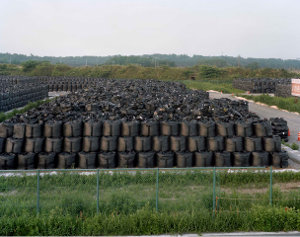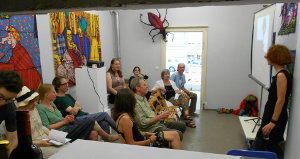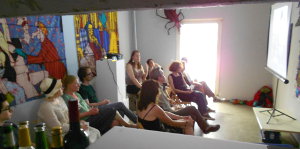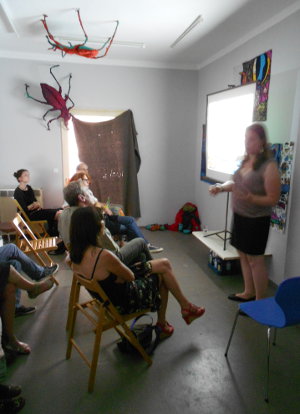(english) Die Künstlerin und Fotografin Yishay
Garbasz konzentriert sich in ihren Arbeiten auf Traumata und untersucht
mit ihrer Großbildkamera Orte, die vergessen oder aufgegeben
wurden.
2013 verbrachte sie dreiWochen in der Präfektur Fukushima, wo
am 11. März 2011 das Atomkraftwerk Fukushima Daiichi durch einen
Tsunami zerstört wurde und den schlimmsten Nuklearunfall seit
Tschernobyl verursachte.
Ausgerüstet mit Schutzkleidung und Geigerzähler dokumentiert
Yishay die verlassenen Orte, welche nun von der Natur zurückerobert
werden, sowie die "temporären" Notunterkünfte.
Im langsamen Prozess des Gehens und der Arbeit mit der analogen Kamera
wird sichtbar, was verloren ist: Ein Gebiet, welches einst die Heimat
von fast 2 Millionen Menschen war, nun verwandelt in eine Reihe von
Geisterstädten, verursacht von einer Katastrophe, die weitgehend
vermeidbar war. Jahrelange privatwirtschaftliche und staatliche Vetternwirtschaft
führten zu ineffektiven und zahnlosen Aufsichtsbehörden,
welche nicht willens / fähig waren, mit den absehbaren Gefährdungen
umzugehen. Dass die Aufräumarbeiten von Desinformation, Unfähigkeit
und Korruption begleitet sind, ist keine Überraschung.
In ihrer Arbeit macht Yishay die Haltung, welche den GAU infolge einer
vorhersehbaren Naturkatastrophe fast unvermeidlich machte, sichtbar.
Ihrer Meinung nach ist das Fukushima-Desaster sowohl in verschiedenen
Facetten der japanischen Kultur, wie auch in der Praxis der weltweiten
Nuklearindustrie tief verwurzelt. Die Menschheit kann sich den Komfort
des "Rituals der Sicherheit" nicht weiterhin leisten, sondern
muss sich der sehr realen Gefahren bewusst sein. Der bisherige Status
quo von Verleugnung und schnellen Lösungen ist nicht mehr ausreichend.
Im Rahmen eines Vortrages stellt Yishay Garbaz ihre Dokumentation
des humanen wie ökologischen Desasters vor und berichtet von
ihren Vorbereitungen, Erfahrungen und Rückschlüssen.
Freitag, 4. Juli 2014, 19.00 Uhr
Vortrag in englischer Sprache
www.yishay.com



